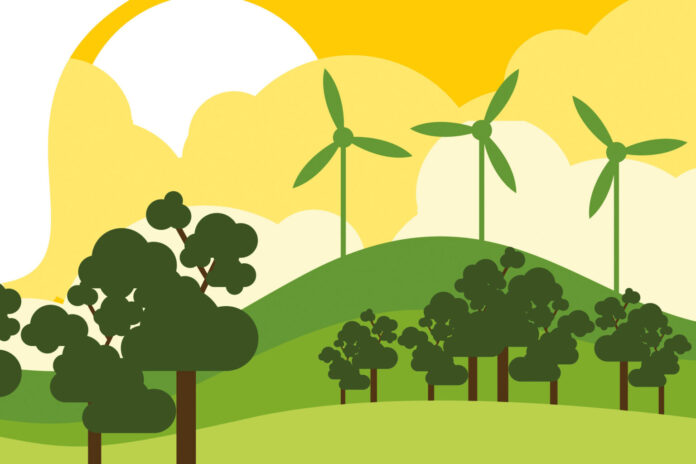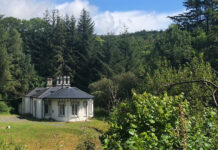
Q: What’s so great about beans? You keeping mentioning them but I’m curious why.
A: Take one example: if you were to compare pasta made from chickpeas to pasta made from durum wheat, which is what most of us eat, chickpea pasta would have three times more fibre, 1.5 times more protein, eight times more essential fatty acids and three times more nutrient density. As for its environmental footprint, growing chickpea uses 41% less water per serving than durum wheat, 45% fewer emissions of carbon dioxide and 37% less energy. You’d also get full on it faster, so you’d eat less.
This is according to Dr. Michael Williams, Assistant Professor of Botany at Trinity College Dublin and the Trinity Centre for the Environment, who has studied and written extensively on the almighty legume. And, Williams explains, chickpea pasta does exist, made by a producer in Bulgaria.
“Beans slot in so wonderfully well as a way to increase human health,” he says, noting statistics on how they lower blood pressure and reduce stomach irritation and cancers. “In terms of providing protein, high fibre, and essential nutrients, they are cheaper to produce in a non-subsidised system and they are not relying on fertiliser.”
Considering Ireland’s current relationship to nitrogen fertiliser, this is precisely where legumes could be a game-changer.
To put our situation in context, Williams points to the fertiliser industry’s history. Prior to the first world war, the global economy was, in many respects, a “nitrogen-run economy,” bird poo bought off the Guauno Islands being the major source. “Agriculture was limited by nitrogen availability and so was the armament industry.”
In 1914, the start of the war was also the start of industrial fixing of nitrogen from the atmosphere – using what’s known as the Haber Bosch process – and turning it into cheap fertiliser and armaments. With it, “agriculture was revolutionised.”
“It’s a staggering industry now,” he says, 188 million tons produced a year and a lot of it wasted. The “best possible scenario” being that 50% of the nitrogen fertiliser the farmer adds is taken up by the plant. “Unhealthy amounts of nitrogen are being leaked into groundwaters, converted to a greenhouse gas or nitrous oxide, which is 300 times worse than CO2,” Williams says. A system relying on nitrogen fertiliser is inefficient, polluting and very expensive.
The amount of nitrogen fixed by the Haber Bosch process is approximately 160 million tons per year, only 110 million with biological nitrogen fixing, meaning “we’ve got a system where artificial nitrogen fixing is greater than biological nitrogen fixing.”
GAME CHANGER
Enter legumes.
“If you dig up the roots of a legume plant, they have little nodules containing a bacteria that fixes nitrogen,” releasing it to the plant and soil. Deep-rooting legumes are great in drought, Williams notes, and they cut down on disease and pests.
In Ireland, legumes can replace fertiliser, for example, if the phaseolus or common bean are grown early in the year and dug back into the soil before maturing, the soil will be so rich in nitrogen, you’ll have to slow its release with straw and green manure.
Adding fertiliser also stalls the natural, biological process. “It’s very expensive for a plant to fix nitrogen, so if there is nitrate being provided by fertiliser, why would a plant do expensive symbioses?”
To get out of the unsustainable reliance on fertiliser, “intercropping and rotation would be the main way back,” Williams says. “Basically, grow legumes, go back to the old sort of agriculture that we have forgotten.”
According to a study from Bangor University and the University of Limerick, “if you supplant one year in five with a legume crop animal feed system, that farmer can cut his fertiliser purchase over a five-year period by 50%,” and the nutrient capacity doesn’t change.
Intercropping is another option, having a row of cereal and a row of legumes where the nitrogen from the legume crop will transfer to other fields. “Although you are planting less cereal, the yields don’t reflect that,” and you can skip fertiliser altogether the next year.
GREENWASHING
As for the suitability of beans to Ireland’s climate, the midlands are the best but there is potential elsewhere. Williams notes that Scotland has succeeded and developed a strain of fava beans that grows in wetter places.
What’s also needed, he adds, is a shift in perspective. In our move to eat less animal protein, even a small change can make a big difference. As one example, supplanting 5% of beef consumption in Germany led to a reduction of 8 million tons or 1% of their annual CO2 emissions. While Irish beef is applauded for its green credentials in comparison to France or Brazil, you might want to look more closely – for CO2, Irish beef is better, but not for nitrogen pollution from over-fertilising. “By only focusing on CO2 you’re effectively greenwashing,” he says.
Ireland is a bean-eating country, but mostly from tins with tomato sauce, and mostly from South America. Generally, frozen beans are the least efficient; “farm to fork, dried beans are better than tinned beans,” although cooking time at home and the efficiency of factories need to be factored in.
ROOM FOR EXPANSION
A “whole new vista” is opening up for things like spirits, including Scotland’s fava-based beer and Arbikie distillery’s climate-neutral Nadar Gin made from peas. With research investment, “There is room for the expansion of the bean industry in Ireland,” says Williams, and, if it doesn’t happen, “we’re going to miss out.”
While the agricultural industry adjusts, the best advice for us, for the earth and our health, is still: eat your beans. And plant some in your fields or gardens if you can!











